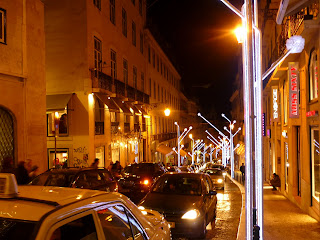Last Sunday April 18th was the International Day of Monuments and Places. A number of museums and monuments were open, offering free tours and other entertainment, while themed guided tours around Lisbon where also organised. I was torn between a few choices, but finally decided on the Reservatório da Mãe d’Água das Amoreiras, part of the Museu da Água (Museum of Water).



The reservoir is where water carried by the Aqueduto das Águas Livres into Lisbon was gathered and then distributed to the different fountains around the city. Lisbon suffered from a lack of water, and the project was started in the 18th century, the aqueduct carrying water sourced from different places surrounding Lisbon.
The aqueduct is one of Lisbon’s most outstanding landmarks. My mother thinks it is Lisbon’s most beautiful monument, and it is indeed stunning.
The group attending the tour was big, and the guide was very good, taking us through the project’s timeline.
We even got to go inside the last stretch of the aqueduct, and I was surprised by how small it was, allowing for only limited amounts of water to flow at a time, rather than the cascades I had imagined.


The reservoir itself, on the other hand, is 7 metres deep and has a capacity of 5,500 m3. The blue water was so inviting, it just made me want to jump in.

The space itself was always meant to be open to the public, and now it also showcases exhibitions and concerts.
 Rua Nova do Almada, 27.11.10
Rua Nova do Almada, 27.11.10 Rua Garrett, 27.11.10
Rua Garrett, 27.11.10 Largo do Chiado, 27.11.10
Largo do Chiado, 27.11.10



















